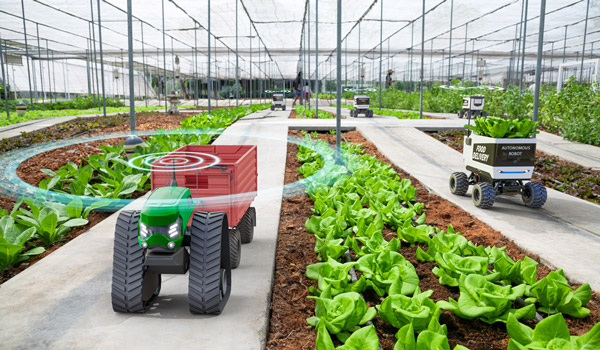
Recent evolutions to 5G standards have made it very simple to create very powerful areas of hyper-focused connectivity. That’s good news for all of us.
AgriFood Connect is an Australian not-for-profit organisation set up to get the agricultural and manufacturing sectors Down Under get more excited about the power of technology. Soon, it’s going to be able to offer those unimpressed farmers something pretty remarkable: a way for them to use all the power of IoT, virtual reality, control of robots and machinery and probably a lot more – no matter how remote their acreage is in the Outback.

The phenomenon we’re talking about here is the rise of private, or NPN, ‘non-public network,’ – essentially, small-footprint 5G. To be clear, 3GPP had laid out the spec for such networks a while back but confused us all by not making it clear that such small networks would be able to easily interact with others—a mistake it cleared up in 2021.
In many ways, what the NPN evolution offers is practical 5G. It’ll be the way a leisure and entertainment company will be able to cheaply and easily create enhanced concert experiences, using its super-powered temporary and localised 5G network to add AR and VR extensions to what would no doubt be an already impressive Dua Lipa concert.
It’s going to be how busy ports like Antwerp and Seattle are going to be able to process millions of shipping containers per year using IoT and secure private comms channels to get commerce moving at digital speed. It’ll be how smart factories or chemical plants will create new generations of consumer electronics or the new mRNA vaccines we hope we’ll never have to need. It may even be the way the dream of working fusion reactor sites get remotely managed. There’s even a future where Wi-Fi stops being used by business completely in its favour.

So, sure, we are in the early days of this market. GSA only started building its own database of 5G NPN activity relatively recently, for example–but it already estimates over 600 organisations already have such deployments, based on either 5G or LTE. That’s a figure, incidentally, that shot up 70% from its 2020 analysis. Headlines about commercial 5G NPN partnerships to win paid work out of it are already starting to appear, too.
Wholesale and MNO Monetisation
Early days, but already exciting days. That’s down to the sheer breadth of business cases that are either already being deployed or are clearly possible. German regulators have had at least 150 approaches to buy private spectrum, for example, while in last year’s Rel-17 even more new NPN functionality was opened up, which will start to make it easy for emergency services use and broadening its potential even more.
So, a lot’s going to happen here, and quickly. In a new paper, we’ve tried to take an early snapshot of what could soon be an excellent telco wholesale market, driven by enormous appetite for transfer of data in and out of these new 5G hot spots and other corporate networks, as well as macro public networks, and the cloud.

An MNO will, for example, be able to offer an automotive brand the set up and running of an NPN in its new Gigafactory, assembling EV batteries. (In the future—and well before we’re all driving electric cars—there’s also a clear roaming opportunity on the horizon here, too.) Even more markets, like in inter-country comms corridors and open access networks bringing universal broadband to remote parts of the world, are coming into being.
If any of this sounds like something you and your team need to be on top of—either as a potential user of enterprise 5G, or as a wholesaler to enable such attractive new services, it’s time to find out more.
So, you’ll be glad to hear that we’ve produced a new resource, Monetising 5G private networks: exploring new wholesale opportunities to help you do just that.
SF writer William Gibson once famously said, “The future’ already here—it’s just not evenly distributed.”
Was he thinking about 5G NPNs, perhaps?